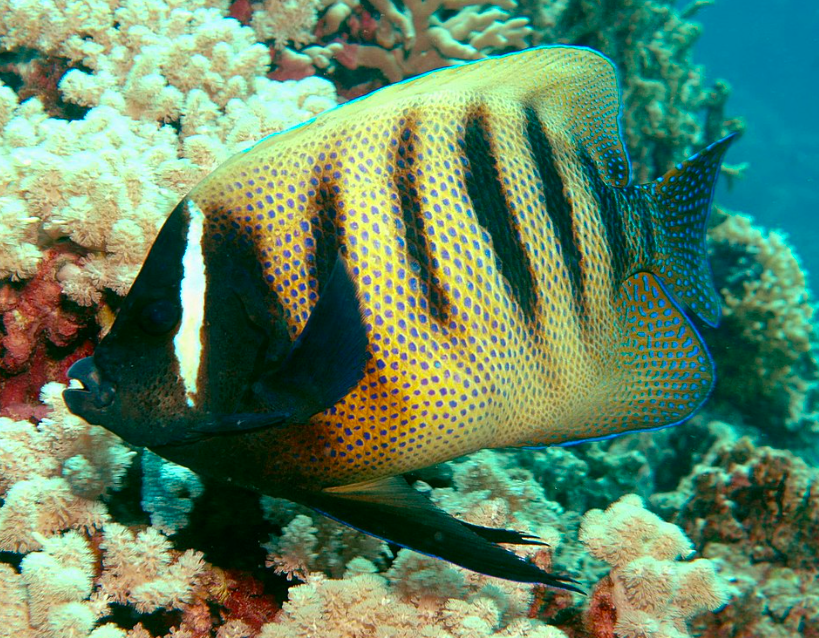 Image 1 of 1
Image 1 of 1


Angel- French Lg
Caring for saltwater French angelfish (Pomacanthus paru) requires attention to several key aspects to ensure they thrive in a home aquarium. Here are the primary care requirements:
Tank Requirements
Tank Size: A minimum of 180 gallons is recommended, as these fish can grow up to 16 inches in length.
Water Parameters:
Temperature: 72-78°F (22-26°C)
pH: 8.1-8.4
Salinity: 1.020-1.025
Ammonia, Nitrite, Nitrate: 0 ppm for ammonia and nitrite; less than 20 ppm for nitrate
Habitat Setup
Live Rock: Provide plenty of live rock for hiding spots and grazing.
Substrate: Sand or fine gravel substrate.
Lighting: Moderate to strong lighting to support any corals if kept in a reef setup.
Feeding
Diet: French angelfish are omnivores. Provide a varied diet including:
Marine algae and seaweed
Spirulina
High-quality angelfish preparations
Mysis shrimp, brine shrimp, and other meaty foods
Occasional sponge-based foods
Behavior and Compatibility
Temperament: Semi-aggressive; can be territorial, especially in smaller tanks.
Tank Mates: Best kept with other large, semi-aggressive fish. Avoid housing with small, peaceful fish and invertebrates, as they may become targets.
Maintenance
Regular Water Changes: Perform regular water changes (20% bi-weekly) to maintain water quality.
Filtration: Ensure strong filtration and good water circulation to maintain high water quality.
Health Monitoring: Regularly check for signs of disease or stress, such as changes in appetite, color, or behavior.
Special Considerations
Juveniles vs. Adults: Juveniles have a different coloration and pattern than adults. Juveniles are black with vertical yellow bands, while adults are dark blue with yellow edges on their scales.
Acclimation: Use a drip acclimation method to gradually introduce the fish to your tank's water parameters to avoid shock.
By maintaining these conditions, your French angelfish can live a healthy and long life in your aquarium.
Caring for saltwater French angelfish (Pomacanthus paru) requires attention to several key aspects to ensure they thrive in a home aquarium. Here are the primary care requirements:
Tank Requirements
Tank Size: A minimum of 180 gallons is recommended, as these fish can grow up to 16 inches in length.
Water Parameters:
Temperature: 72-78°F (22-26°C)
pH: 8.1-8.4
Salinity: 1.020-1.025
Ammonia, Nitrite, Nitrate: 0 ppm for ammonia and nitrite; less than 20 ppm for nitrate
Habitat Setup
Live Rock: Provide plenty of live rock for hiding spots and grazing.
Substrate: Sand or fine gravel substrate.
Lighting: Moderate to strong lighting to support any corals if kept in a reef setup.
Feeding
Diet: French angelfish are omnivores. Provide a varied diet including:
Marine algae and seaweed
Spirulina
High-quality angelfish preparations
Mysis shrimp, brine shrimp, and other meaty foods
Occasional sponge-based foods
Behavior and Compatibility
Temperament: Semi-aggressive; can be territorial, especially in smaller tanks.
Tank Mates: Best kept with other large, semi-aggressive fish. Avoid housing with small, peaceful fish and invertebrates, as they may become targets.
Maintenance
Regular Water Changes: Perform regular water changes (20% bi-weekly) to maintain water quality.
Filtration: Ensure strong filtration and good water circulation to maintain high water quality.
Health Monitoring: Regularly check for signs of disease or stress, such as changes in appetite, color, or behavior.
Special Considerations
Juveniles vs. Adults: Juveniles have a different coloration and pattern than adults. Juveniles are black with vertical yellow bands, while adults are dark blue with yellow edges on their scales.
Acclimation: Use a drip acclimation method to gradually introduce the fish to your tank's water parameters to avoid shock.
By maintaining these conditions, your French angelfish can live a healthy and long life in your aquarium.






